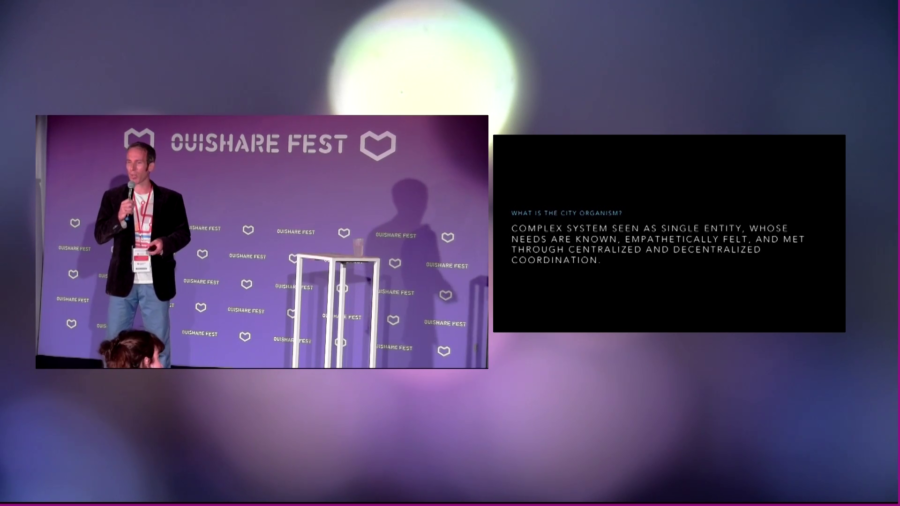Rob Jameson: Hi everybody. So, nice to meet you all. I should just correct and say there aren’t two thousand people that live at Arcosanti yet. There’s a master plan, but I’ll get into that in the talk.
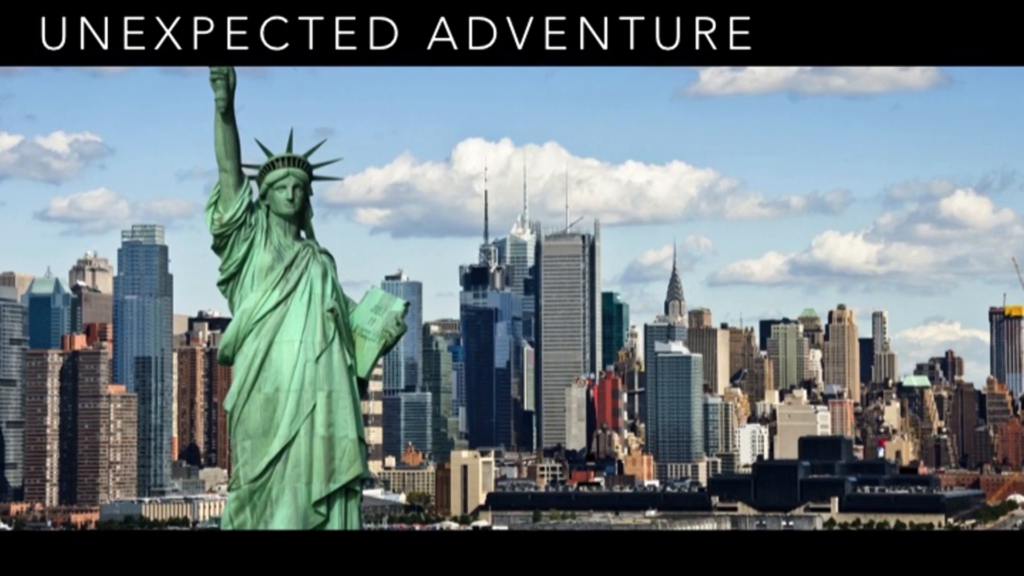
So this is a talk on the city as an organism. About a year ago I came to OuiShare 2015 and I was beginning a journey. And I wasn’t really sure where I was going to end up. My background is as a tech cofounder in a company, and I was looking for a place where I can do user testing and understand the impacts of a network for crowdsourcing for groups of people.
I began a road trip that lasted about six weeks. And coming from New York City, the place that I wound up of Arcosanti, I thought that I knew a lot on what was possible in cities, and it turns out that I was really wrong.
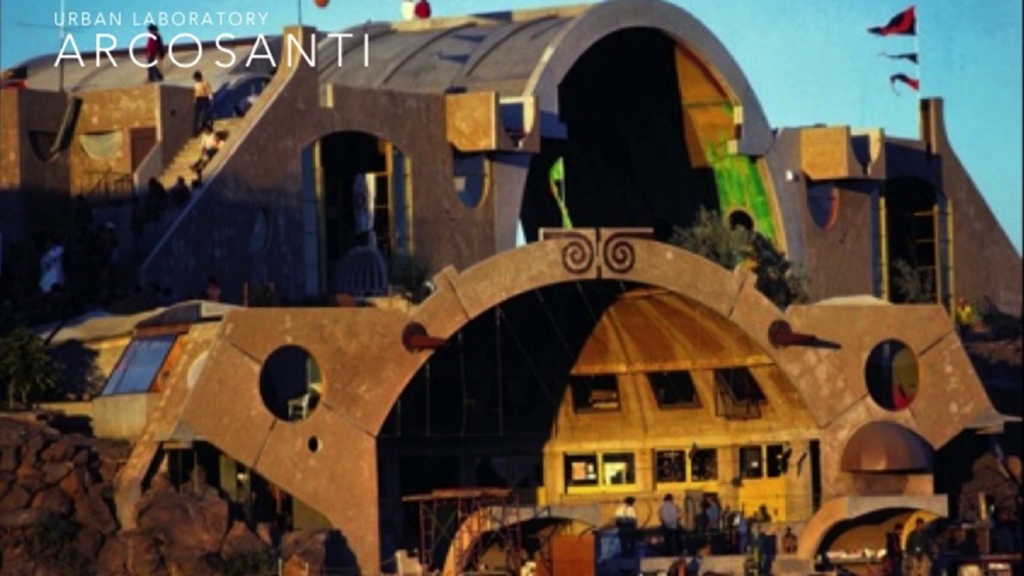
So, I arrived at this place here, ArcoSanti. Arcosanti was started in 1972. The founder Paolo Soleri identified that soon, over 50% of the world’s population, which we’ve now had, has moved into cities. And because of that, we had to rethink the way we live together. The city is carless. The idea is that it fuses architecture and ecology together into a self-sustaining ecosystem.
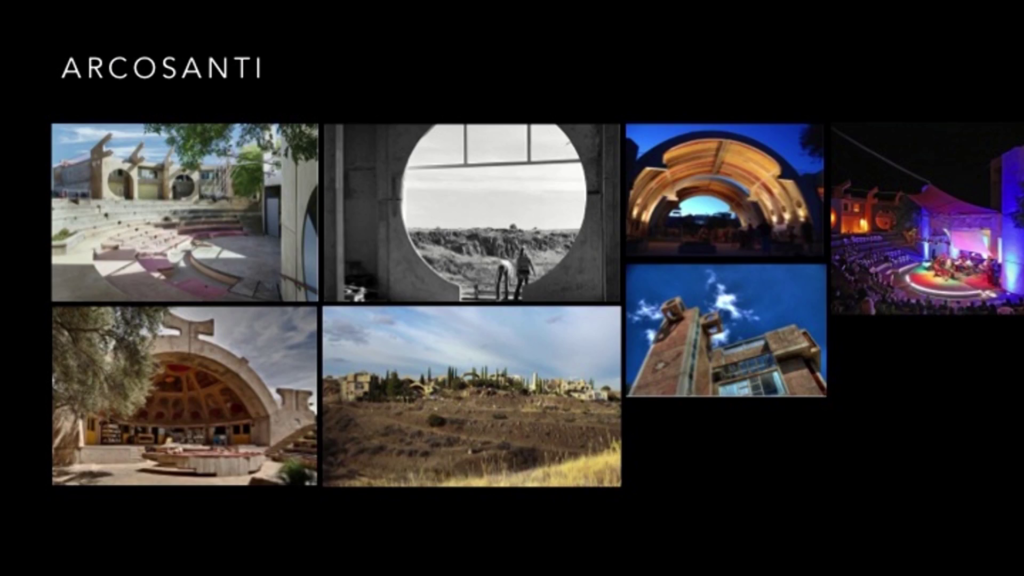
It is an architectural marvel. It’s very beautiful. And as was mentioned earlier, it was built all by volunteers. Nothing was contracted out. Basically what happens is you come, you go into a workshop program. You’re trained by the previous generation. And then everyone continues to build and iterate over and over and over again. So it’s a very fascinating case study for me. And I became the technology manager there, and I didn’t fully understand at the beginning how powerful this experience would be for understanding what’s possible collectively.
So, Paolo Soleri the original architect passed on two years ago. And he designed a city that was for four thousand people. But currently there’s only about eighty people that live there. It’s fantastic in that almost everything that we have is in the commons. We have way more resources than we know what to do with, from art spaces, and entertainment, and food, and learning opportunities. But why, if you’re in a community that’s following the principles that the sharing economy talks about, why is it not thriving? Why isn’t it massive and why doesn’t everyone know about it? And that’s what we’ll talk about.
So first let’s redefine what “city as an organism” means. When Paolo used this term, he was referring specifically to the impact that architecture had on the environment, on the living environment of people. But now that we have new capabilities with technology, we’ll redefine this as a complex system seen as a single entity, whose needs are known, empathetically felt, and met through centralized and decentralized coordination. And we’ll go into how we’re experimenting with this shortly.
So, being the technology manager, I started first to move the city as organism concept ahead through tech so that people could understand the collective use in the city. I broke it down to mind, body, spirit; I thought it would be an interesting way for people to relate this that were non-tech.
The first thing we did was we introduced Slack. And interestingly enough, Slack is now used by over 80% of the people that live there. Which is pretty phenomenal considering that people range from ages five to about eighty. From there, that gives us a very clear insight, daily, on all sorts of content that are concerns for people. We do things like doing daily health checks of where are people at physically and emotionally each day. We extract needs that are expressed on Slack and then put them in different needs lists. So this has really created this kind of noospheric layer of understanding the collective consciousness of the community.
Next is Internet of Things. We have different measuring devices that measure the utilities and the flow of people. One statistic I learned was that there’s over 570 thousand local governments in the world. Only 2.5 thousand are pursuing Internet of Things currently to measure the way all the different utilities are used. As we begin to introduce more of this information, it’s viewable on a public dashboard that we hope that other people can see and help us hack how efficient the city is.
Finally—this actually just began last weekend—We’re using augmented reality to allow the dream of what Arcosanti can be to be visible to far more people. So like I’d said the city has been designed for four thousand people. And now with an app for any smartphone, you can scan a tracking point and then see the future parts of the city that don’t exist yet. And this is really powerful because previously, if you were an architect you might understand the ultimate vision. Or you might be able to pick it up and look at it two-dimensionally in a book. But now for zero carbon footprint, we’re actually able to see the designs, have people with all different mediums and backgrounds critique it, and discuss culturally what would happen if these buildings were actually built.
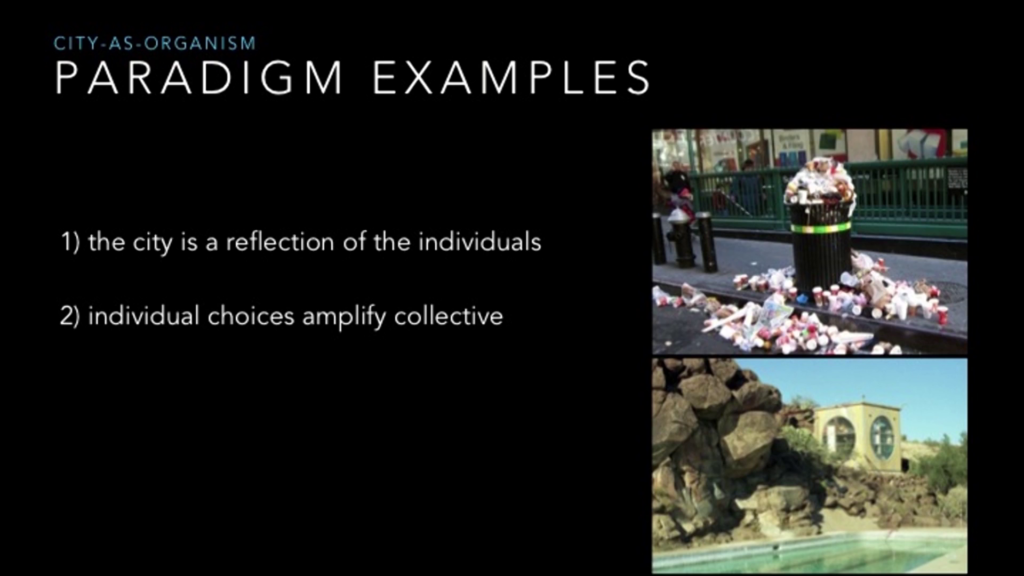
So I want to talk about what happens as more and more people start to become in sync with the idea that the city is an actual organism. And I’ve charted out the basic steps that I’ve observed so far.
First of course you have to have everyone’s base needs met. If people are going hungry, if they don’t have a place to live, it’s really hard to transcend your individual identity into a collective identity. You have to have a strong commons. So like I mentioned, about 70% of the physical spaces and resources are in the commons.
After that, start something that’s more of an internal paradigm shift. And we see this as people come and visit and stay with us. It’s the beginning of the my body/city body interrelationship. At this stage, people don’t regard others as other. They start to just say you know, we’re all part of this collective unit. One example just to show how radical this can play out is, coming from New York City it would be the equivalent of if you’re walking down the street and you see garbage on the side of the road, you would say, “Oh, that’s like garbage in my living room. Let me pick that up because this is a reflection of myself.” And collectively at Arcosanti this is where everyone is at.
Beyond that, this is the stage we’re at now, is the the needs and resources of the collective organism are made visible to everyone. This allows all sorts of different spontaneous organization. We call them synergies, where people are just acting randomly to help the collective thrive.
The next phase that we’re starting with right now also is autonomy in participation. What that means is once people skills are clearly identified and they’ve been vetted as being responsible in the community, rather than working in a specific department they can float freely and meet needs as they come up.
And finally, I’m calling it telepathic and synchronistic reality. We’re beginning to see the very edge of this right now. And by that what I mean is people’s needs are communicated without the need to even do it verbally. So just from someone’s eyes, you can understand what it is that they’re needing and then act. And some people in the community are experimenting with this, and I’m excited for next year to do more experiments there.
So, as we’ve been moving towards this new paradigm, which takes the city as organism from architecture and now with technologies bridging the gap, there’s three core lessons I’ve learned I wanted to share with everyone.

The first is where you focus. In the beginning, I thought that the goal would’ve been to focus on collective happiness. But what I found was you can actually give someone everything that you would think that they need to be happy and they’ll find ways to be unhappy. And further, they actually will be more unhappy because once their basic needs are met, they start going higher up the Maslow hierarchy of needs into self-actualization, and those become more and more difficult from a centralized, organized body to provide for people. So rather than focusing on happiness, the goal now is focusing on collective awareness of what the city organism needs. From there, people understand that they have a sense of purpose. They understand that their unique skills can actually contribute to the city thriving. And because of that, they get a sense of joy, indirectly.
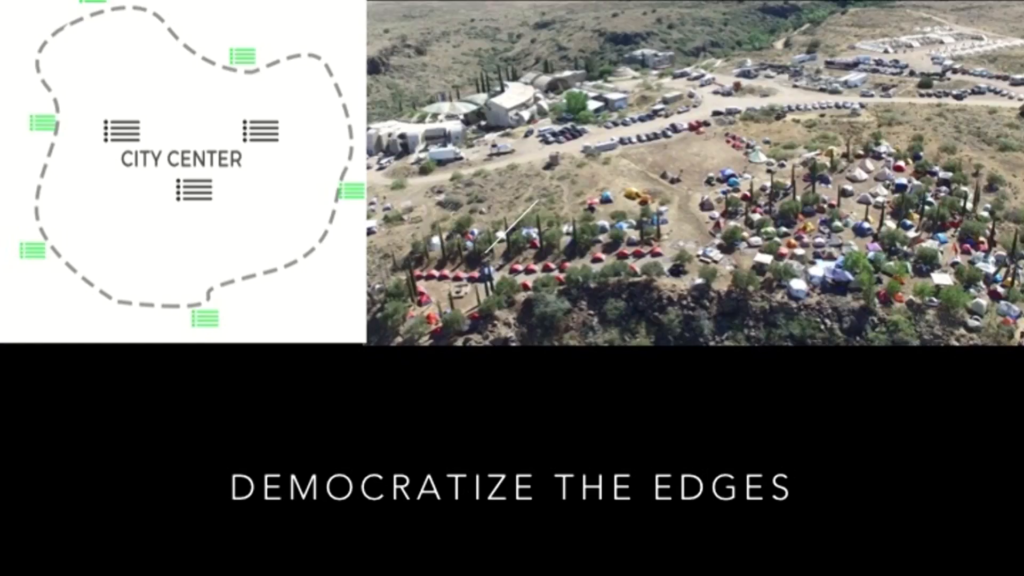
Next is democratizing the edges. So, one thing I’ve seen at Arcosanti and other larger organizations that I’ve worked with is that the business protocol and operational protocol is usually dictated by a core group which is conservative. And in Arcosanti’s case that’s made growth more difficult. We have forty thousand visitors per year. We have an archives department which has an incredible amount of data on experiments that’ve happened. But it’s mostly not been benefi— It hasn’t…the benefits haven’t been extracted to really help us do what we want to do.
So if you know about permaculture, the idea’s that where two ecosystems overlap, there’s the most biodiversity and the most value can be created. From the city concept, the idea is that where people interact with our media, where people interact with our resources from the periphery, we want to be as democratic and inclusive as possible.
One example of this recently. This is an overhead shot from about five days ago. We had a large event called FORM which had Skrillex and Bonobo and a whole bunch of large acts come. And a lot of the things that happened during that event were not decided by a centralized authority, they were decided ad hoc because we didn’t have time. Because of that, there was way more innovation that would happen than if we had meetings about meetings about meetings and tried to get the the centralized deciding authorities to allow a lot of the things that ultimately went down.
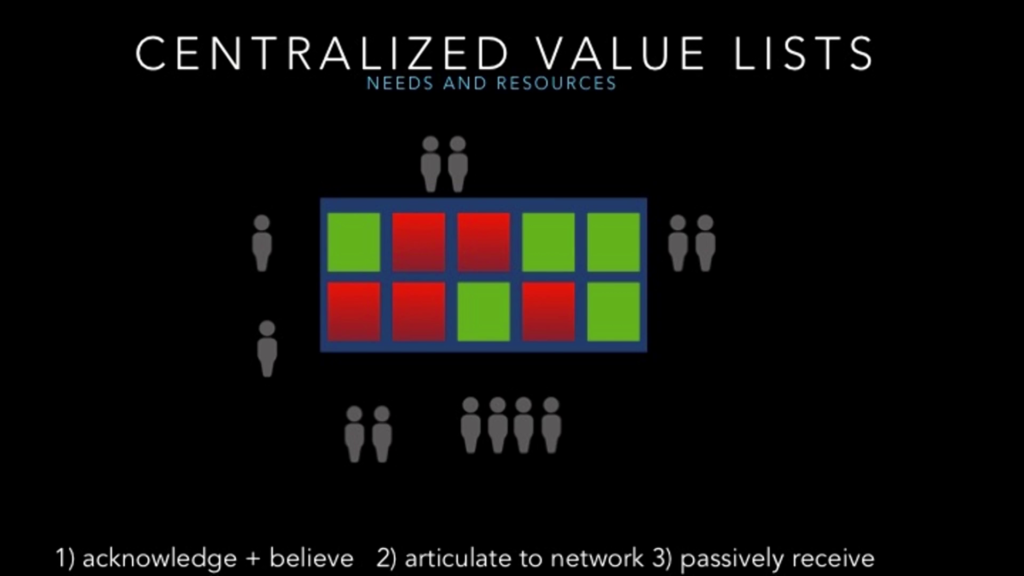
And the final is centralized value lists. And this is perhaps one of the largest counterintuitive lessons that I’ve had in this process. About four months ago, I started to meet with the managers of all the departments and identify everything that they need. And it was…surprisingly difficult. It’s not easy for people to just answer, “Oh, I need this, I need this.” There’s often feelings of inadequacy that come up. Feelings of feeling unloved. Feelings of being fired or that they might get reprimanded in some way.
But what we found was once the needs were identified clearly, they were able to be met by others without centralized organization. So simply by expressing what’s needed, once you’re at this level of consciousness of the city as an organism, the edges of the network start to fill in all the gaps for you. And that thing that’s a need, that could’ve been perceived as a weakness, is actually an opportunity for participation.
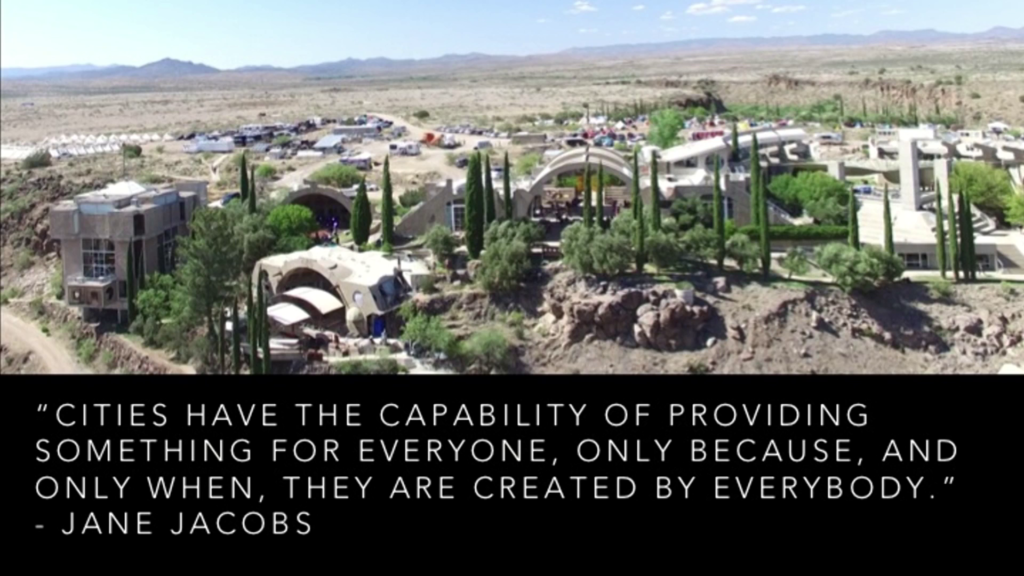
So here’s a quote that I truly believe that I think sums up a lot of this. “Cities have the capability of providing something for everyone, only because, and only when they’re created by everyone.” And obviously this is what we’re living at Arcosanti as everything is built and run by volunteers.
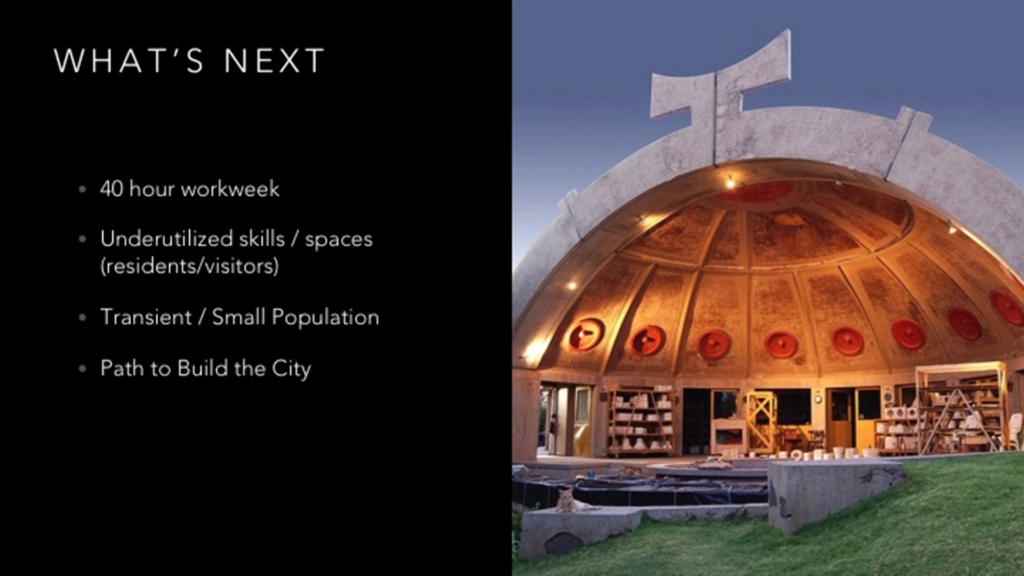
Talking now about what we’re hoping to look at next. Many of us still work in the forty-hour work week. There’s a a continuous discussion on underutilized skills and spaces. Like I had said, we have forty thousand visitors per year that are coming to this urban laboratory that we’d like to engage with more effectively and put them to work. Increasing the population; getting this unstuck from the current eighty to a hundred people that are there. And finally, finding a way to build the city, build the master plan in what I hope will be the first example of a crowdsourced city in the world.
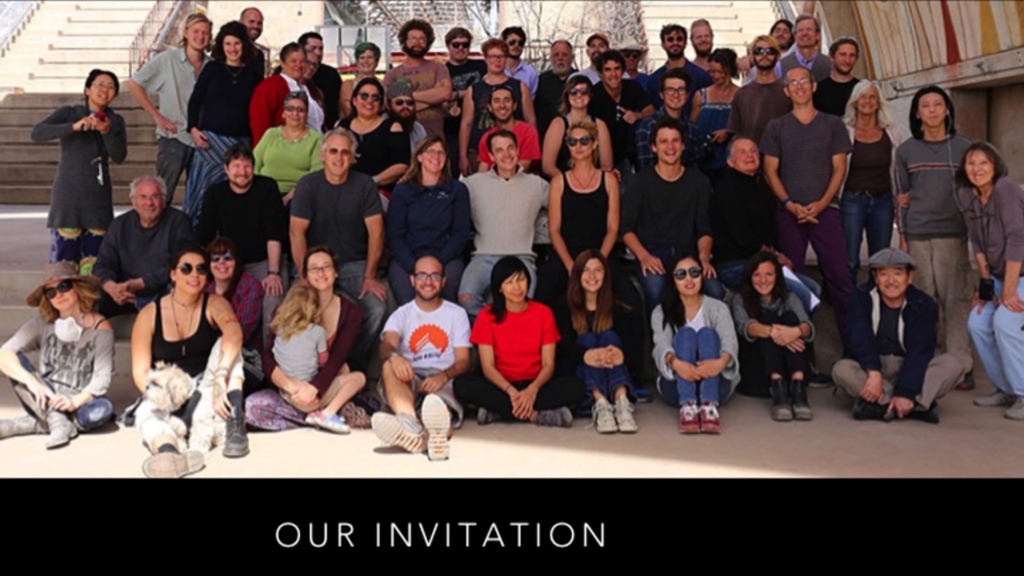
And my final point is I’d like everyone here in this room to one day have the experience that I had when I first wound up at Arcosanti. There’s a sign right at the front when you come in that says “urban laboratory” with a question mark. As in they question everything to the extent that they even question the term “urban laboratory.” And that to me, being in a startup, that was gold. That was the most welcoming feeling. It’s not a perfect place that we have. It’s not a utopia. But the ability to experiment and people knowing that they are part of the experiment changed my life, and I think you can change many other people’s lives as well. So, it’s my hope and invitation that if you have the need for a testing ground with any ideas or theories that you’re working on, feel free to contact me. And hopefully we can all cocreate the next iteration of what Arcosanti can become. Thank you.
